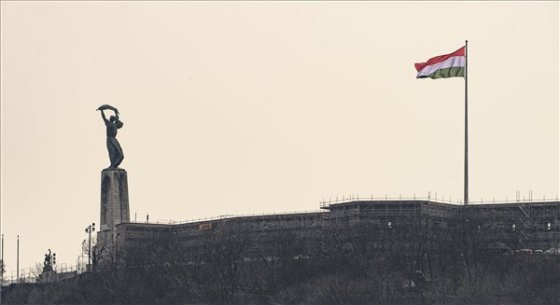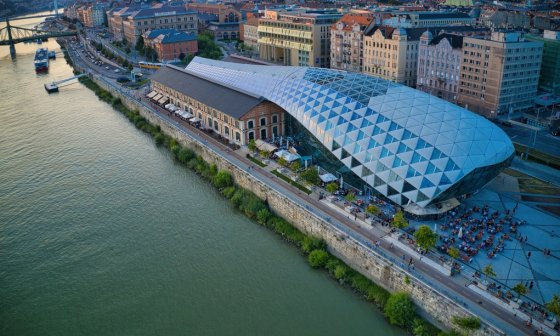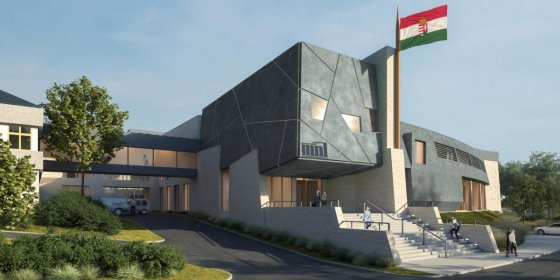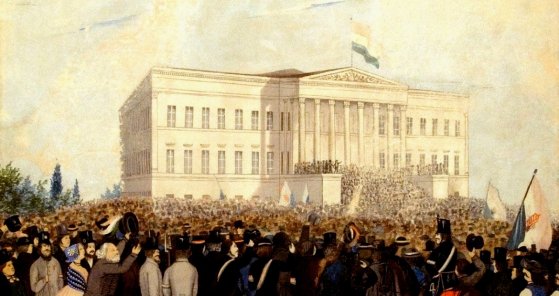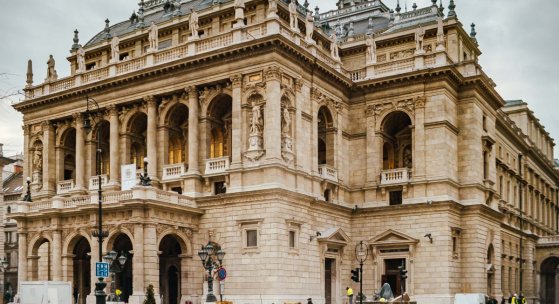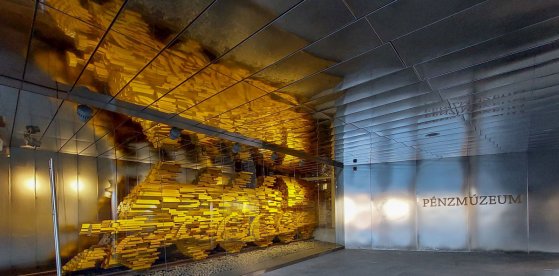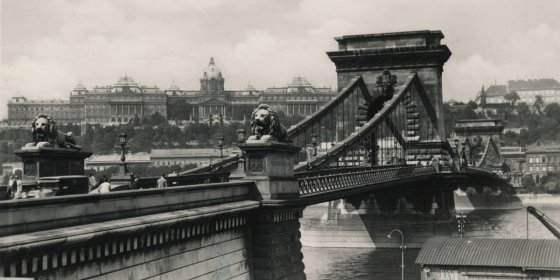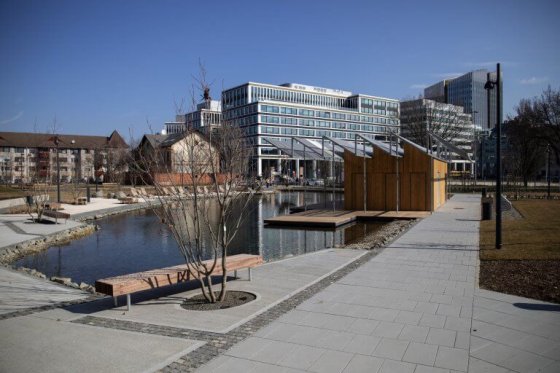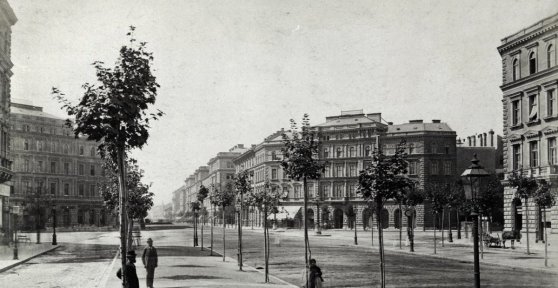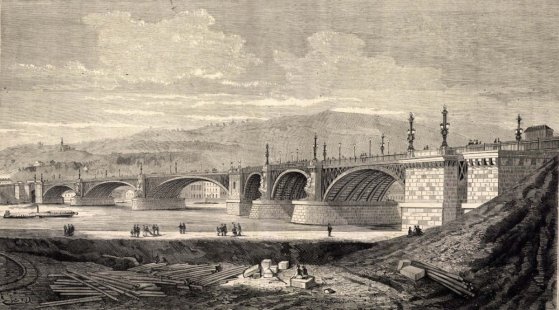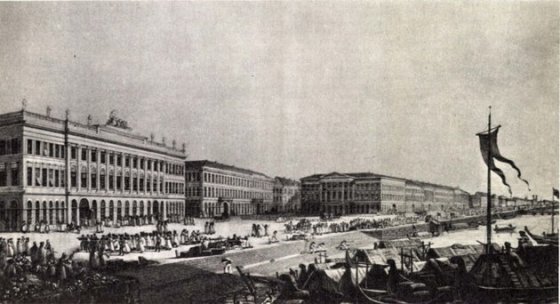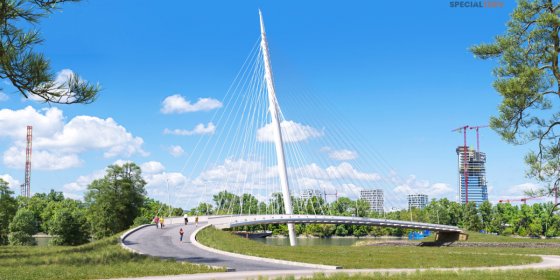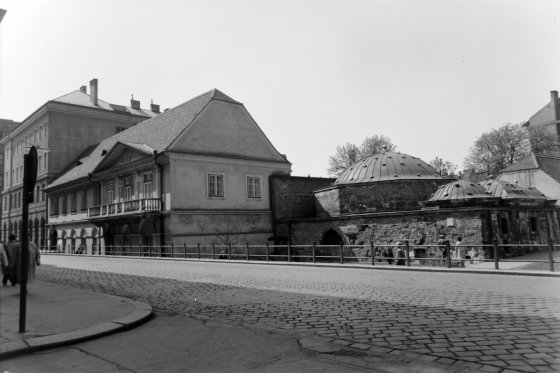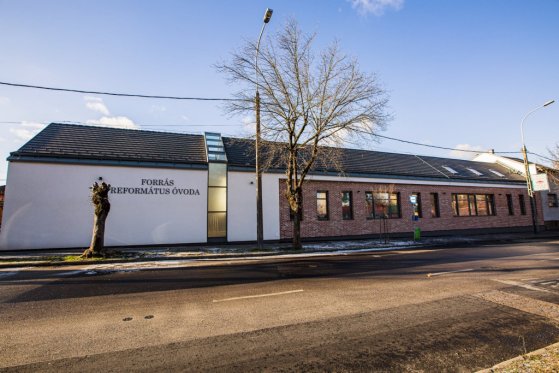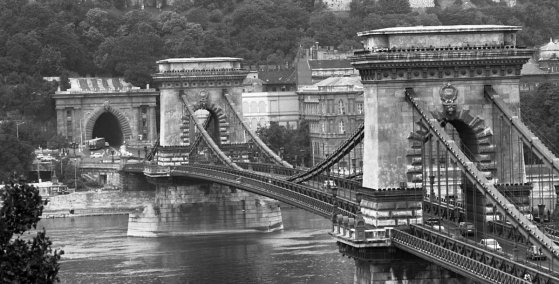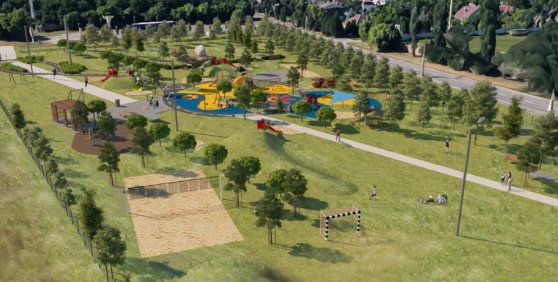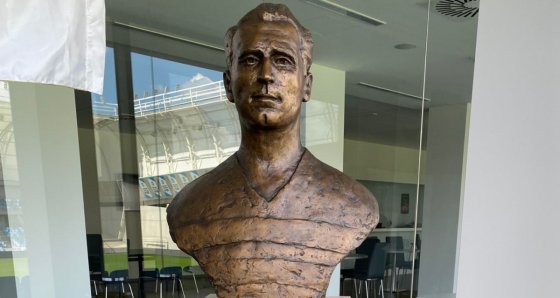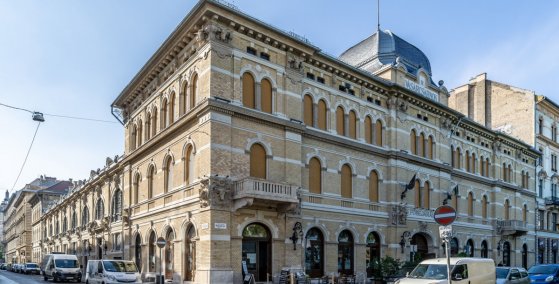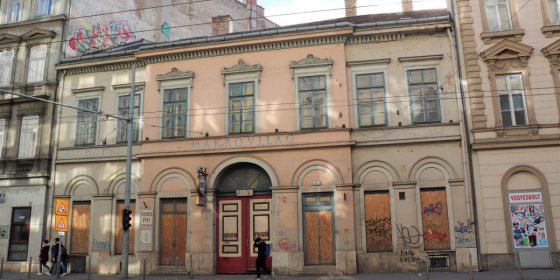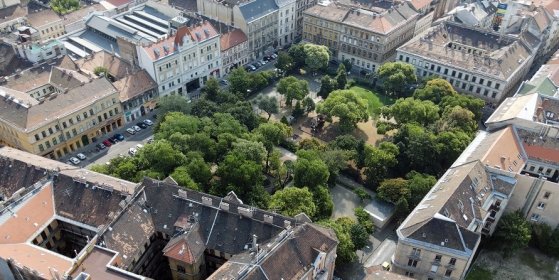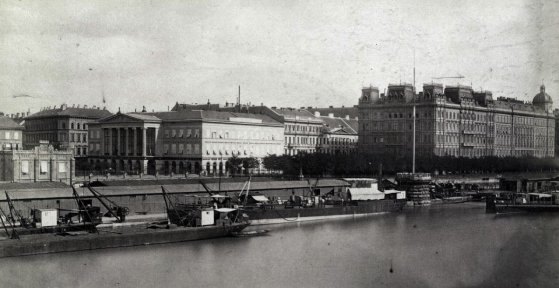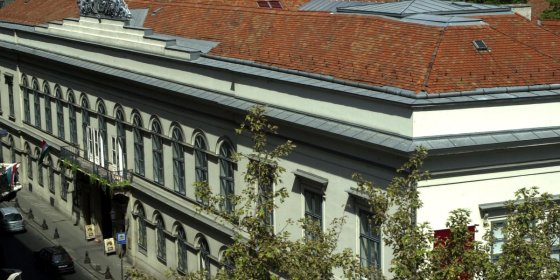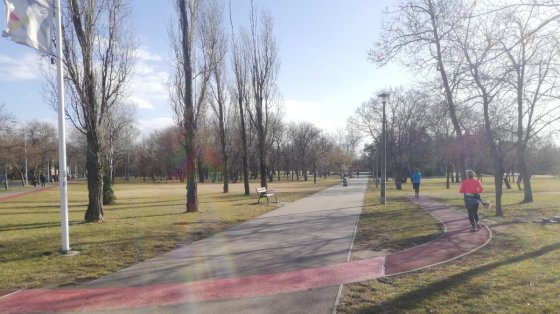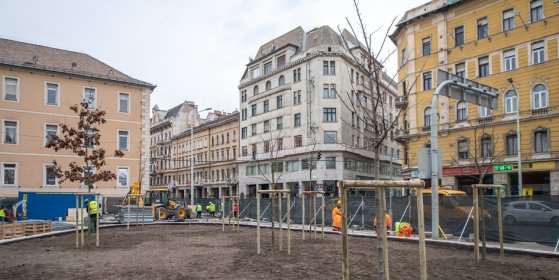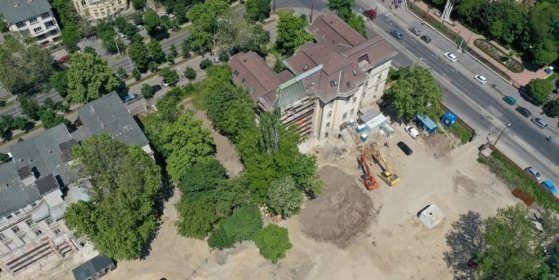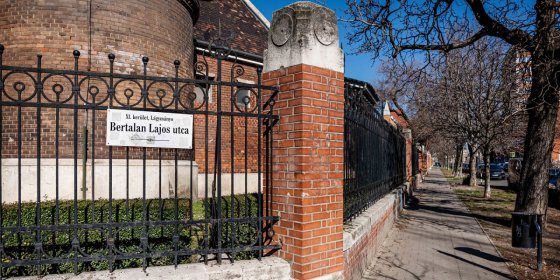 The „intertwined history” of the bridges and the city of Budapest
Which ideas and events have shaped the fate of bridges of Budapest and the cityscape? Alongside many other interesting facts, this question is also answered this newly published book by the Budapest City Archives, which introduces the history of bridges in Budapest.
The „intertwined history” of the bridges and the city of Budapest
Which ideas and events have shaped the fate of bridges of Budapest and the cityscape? Alongside many other interesting facts, this question is also answered this newly published book by the Budapest City Archives, which introduces the history of bridges in Budapest.
pestbuda.hu
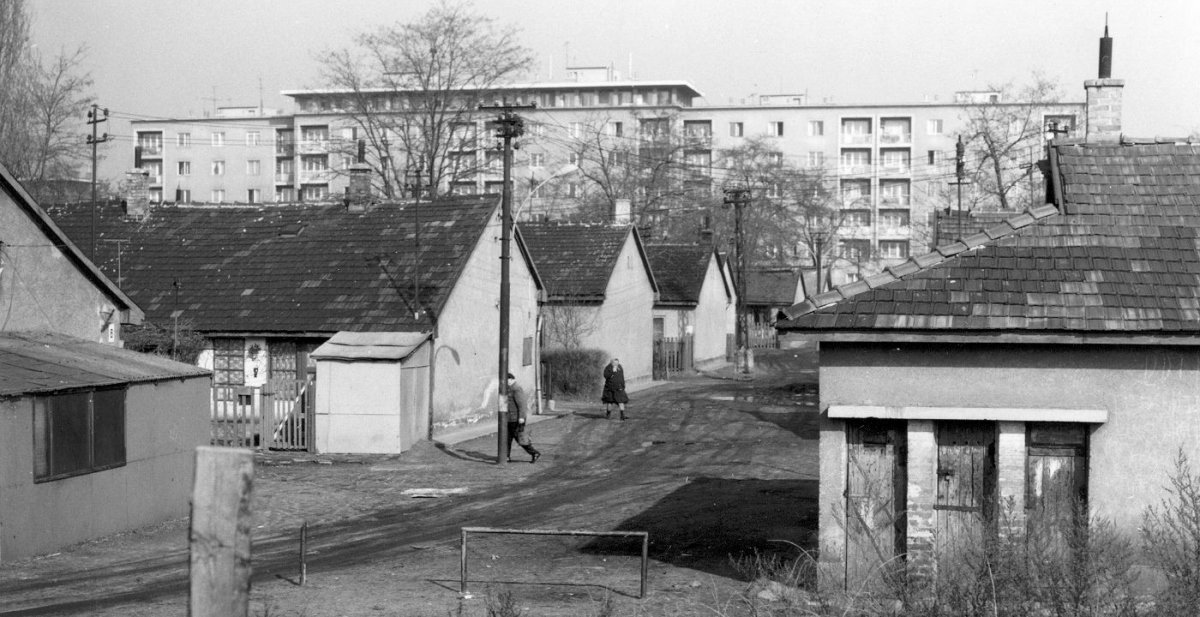 Flowery housing estate from the world of deep poverty - The former emergency houses of Marie Valerie housing estate were demolished 65 years ago
Flowery housing estate from the world of deep poverty - The former emergency houses of Marie Valerie housing estate were demolished 65 years ago
March 17, 2022 at 10:00 AM
The József Attila housing estate is one of the districts of Budapest with the most green areas, trees and bushes, in 2012 it even won the title of the most flowering housing estate in the country. However, fewer and fewer people here know that there was a time when this area was not known for its comfort. Its name was also different, which in itself revealed a lot about the conditions here: Marie Valerie emergency housing estate.
The country’s largest flag was hoisted at the Renewing Citadel
March 16, 2022 at 6:00 PM
On 15 March, the largest national flag of Hungary was hoisted on the Citadel, which is under renovation. The 72-square-foot flag will adorn the capital’s iconic building day and night.
It was decided 245 years ago that the oldest university in Hungary was moving to Buda
March 16, 2022 at 9:00 AM
The oldest, still operating university in Hungary, the legal predecessor of today's Eötvös Loránd University, Semmelweis University and Pázmány Péter Catholic University, began operating in Nagyszombat [today Trnava] in 1635. Maria Theresa decided to move it, and although it was suggested that it should be placed in the Invalidus Palace in Pest, in the building of today's Central Town Hall, it was finally moved to Buda, into the Castle, in 1777.
Renovation of the Whale has begun
March 15, 2022 at 6:00 PM
The capital's iconic building, the Whale, is being renovated. As part of the complex reconstruction of the building, the main and outbuildings will be renovated and the damaged glass elements will be replaced. The new decorative lighting has already been completed, so the house will be in national colors on the occasion of 15 March.
The renovation of the building of the Hungarian National Archives in Óbuda may begin soon
March 14, 2022 at 2:00 PM
Development of the Archive's Lángliliom Street warehouse and research room may begin soon. As part of the investment, the building will not only be renovated but also expanded, and the above-ground warehouses equipped with state-of-the-art equipment will be able to store the documents in an appropriate manner and will also have the opportunity to research them.
Sándor Petőfi lived in several places around the National Museum
March 13, 2022 at 11:00 AM
At the beginning of March 1848, the National Museum was one of the most important places in the life of the youth of March, including Sándor Petőfi. Half a decade earlier, Petőfi's life was also connected to this area at several points, as the main locations of his stay in Pest in 1843 and 1844 can be found in the area around the museum. There were several buildings in the area that no longer exist today, where the poet visited for a short time or was just renting accommodation.
Áron Gábor's copper cannon in the Buda Castle - The people of Budapest can see the artillery device known from the folk song with their own eyes
March 12, 2022 at 5:30 PM
The only authentic copper cannon connected to Áron Gábor, which is known from the famous folk song, can be seen in a worthy place, in the building of the reborn Guard House at the Buda Castle. At the exhibition on the War of Independence of 1848-49, visitors can admire the cannon itself, but there are many other interesting objects associated with the revolution and the period of retaliation shown in the building.
After almost 5 years, the renovated Opera House opens its doors today
March 12, 2022 at 2:00 PM
Restoration work began in the building of the Hungarian State Opera in October 2017. The renovation, which lasted for almost 5 years, not only serves to further illuminate one of the architectural gems of Budapest, but it also represents the basic requirements of the 21th century. The history of the construction of the Opera House also proves that these requirements have changed from time to time.
Gold Bars in the deep - The Money Museum opens in the Buda Palace on 15 March
March 11, 2022 at 2:30 PM
One of the most famous buildings of Széll Kálmán Square, the former Buda Postal Palace, has undergone huge changes in recent years. It was purchased by the Hungarian National Bank and began its renovation in 2018. Its exterior has been restored to its golden age, while its interiors have been modernised to accommodate its new functions: most of it has been occupied by the bank's supervisory centre, and the Money Museum was installed in the north wing, which will open on 15 March. However, it was already shown to the press, where Pestbuda could also report from.
After the war, the coat of arms of the nobility only remained on the Buda side of the Chain Bridge
March 11, 2022 at 11:00 AM
Two coats of arms were placed on the Chain Bridge 170 years ago, three years after it opened. Family, noble symbols that referred to the two people without whom the first permanent Danube bridge connecting Pest and Buda would not have been built. They were the greatest Hungarian and a wealthy banker, István Széchenyi and György Sina, to whom the general meeting of the Chain Bridge Company wanted to give gratitude this way.
The 13th district Vizafogó park was handed over
March 9, 2022 at 7:30 PM
On Tuesday, the 13th district Vizafogó park was handed over. The area is called an eco-park, ie during the planning process, special attention was paid to making it ecologically sustainable. A new artificial lake one and a half meters deep has also been created, which also serves as the main visual element.
Its construction has caused controversy, today it is one of the most elegant parts of the capital - the Andrássy Avenue
March 9, 2022 at 10:00 AM
One hundred and fifty years ago, on 9 March 1872, the contract was signed, with which the construction of the representative avenue of Pest, Andrássy Avenue, could actually begin. The design of the route strongly divided the public, with many seeing it as a luxury investment serving the needs of the aristocracy. Soon after its opening, it became clear that the result went beyond all gentlemanly whims: it was one of the most important urban development enterprises of the second half of the 19th century.
The look of the second bridge of Budapest was decided 150 years ago
March 8, 2022 at 11:00 AM
The result of the design competition for the Margit Bridge was decided on 9 March 1872, 150 years ago. The winner became Ernest Gouin’s elegant arch bridge idea. The bridge south of Margit Island was to be built with a representative purpose, hoping to raise the light of the about-to-be united Budapest, and help make it a Vienna-like capital of the country. Despite large-scale ideas, there has been a petty discussion about cutting construction costs.
An impressively rich oeuvre of an architect - József Hild died 155 years ago
March 7, 2022 at 10:00 AM
One of the most famous figures of Hungary in the 16th century was József Hild. He fully deserved his reputation, as the cityscape of Pest, which was booming, was largely determined by his work. However, the unbroken development also caused the destruction of most of his works: many of his inner city buildings were demolished to give way to newer and bigger ones. Fortunately, some of his buildings still stand today and promote the talent of their designer.
The newest bridge in Budapest - An arched footbridge will connect Csepel with Pest
March 6, 2022 at 9:00 AM
The special pedestrian bridge is already under construction in Budapest, which, starting from the athletic stadium of the 9th District, will finally connect the Csepel Island peak to the city's circulation. The structure will connect the island with the Pest side with an arched road, and its recently erected pylon reaches a height of 65 metres.
Witness of the Turkish Era - The renovation of the Király Bath is still pending
March 5, 2022 at 9:00 AM
One of the most emblematic surviving buildings of the Turkish era in Budapest, the Király Bath, which is still closed, has been awaiting renovation for some time. Renovation work has not yet begun, although a call for ideas was launched in 2017 and the best design was selected, but the actual conversion work will take some time. The building was last completely renovated in the 1950s. Since then, there have been more or less restoration works, but today we find the bath in a very bad condition, the history of which dates back to the time of the Turkish occupation.
Kindergarten in Rákospalota, built on the site of a former church
March 4, 2022 at 2:00 PM
The new kindergarten was built on the site of a Reformed church in the Old Town and the associated former school, which was demolished at the beginning of the 19th century. The new institution will receive children from September.
The Chain Bridge was completely renovated 35 years ago, but the Kádár coat of arms was not replaced
March 4, 2022 at 9:00 AM
The Chain Bridge was last renovated in 1986–1988 before the current reconstruction, and the crossing was closed to cars on 1 March 1987. The renovation affected almost every part of the bridge, which was already in extremely poor condition at the time: the rusty chains as well as the stone surfaces and ornaments of the gates and the structure of the roadway. Although the Hungarian coat of arms with a crown-laurel wreath was already adorned on the candelabras, the idea of exchanging the coats of arms of Kádár on the pylons had to wait for years.
The 22nd district Tétény meadow family park construction started
March 3, 2022 at 2:00 PM
In the area around the Swabian Memorial in Nagytétény, in the shade of the existing trees, a leisure place will be created, where the new family park will have something for everyone, from the smallest to the largest. There will be playgrounds for various ages, an outdoor gym, a football and beach volleyball court, but there will also be a fenced dog run and a toboggan run.
Nándor Hidegkuti, to the miracle striker of the Golden Team, was born in Óbuda a hundred years ago
March 3, 2022 at 10:00 AM
The excellent footballer of MTK, who became the Olympic champion in 1952 with the legendary Golden Team, started playing football with a rag ball next to the brick factory in Újlak. He had come a long way from Óbuda to world fame, but he managed to achieve what many longed for. Nándor Hidegkuti was born a hundred years ago.
Renovation of the interiors of the Hunyadi Square fairgrounds may begin next year
March 2, 2022 at 2:00 PM
After the external reconstruction, which was completed a few years ago, the renovation of the interiors of the Hunyadi Square fair hall, designed by Czigler Győző, can begin next year. During the works, the subsequent additions will be demolished and the original spatial structure will be restored, a gallery level will be built, but the previously planned underground garage has been removed from the plans.
From a noisy apartment building to the palace of the Academy: János Arany lived in many places in Pest
March 2, 2022 at 9:00 AM
Born 205 years ago, János Arany first saw Pest in 1843, but he only became a permanent resident of the city more than a decade and a half later, in 1860 - and remained so until his death. Several of the poet's former homes in Pest still stand today: the two classicist houses on Üllői Road preserve the memory of the poet, as well as the magnificent palace of the Academy, in which he lived for the rest of his life.
A monument is being built in honor of those who died in the ghetto in Klauzál Square
March 1, 2022 at 2:00 PM
A memorial will be erected to the victims of the Pest ghetto is erected in the 7th district Klauzál Square. The work will consist of a bronze plate with a trace of three thousand nails reminiscent of the unburied dead.
Rising houses - How did Budapest's development into a world city begin?
March 1, 2022 at 9:00 AM
As a result of the Compromise of 1867, dizzying economic development began in Hungary. This was particularly striking in the capital, which in a few decades has evolved from a medium-sized settlement to one of the largest cities in Europe. People flocked to Budapest from the countryside, and more and more houses were built to give the new townspeople a place to live.
Development of the Aquincum Museum has begun - the wonders of ancient monuments are presented in an experiential way
February 28, 2022 at 12:00 PM
The long-awaited development work has begun at the Aquincum Museum, during which a completely new experience wall will be built on the site of the rusty iron fence on Szentendrei Road and a new exhibition will be created to give a glimpse into the lives of the Romans who once lived here. Orsolya Láng, the director of the museum, told Pestbuda exactly what is changing.
The interiors of Károlyi Palace are being renovated
February 27, 2022 at 7:00 PM
The interiors of the Károlyi Palace in the 5th district, which has housed the Petőfi Literary Museum for sixty-five years, are being renovated. The restoration affects a listed one-storey, classicist building of about 1,730 square meters. As part of this, they will improve public traffic, restore the ornate gate, restore and expand the exhibition spaces, and make the building accessible. In 2000, during the complete renovation of the palace, the architecture that was finalized in the first half of the twentieth century being reversed. The palace is expected to be completed in the fall of 2022.
Kőbánya can also cause surprises
February 26, 2022 at 10:00 AM
Kőbánya is one of the most deplorable districts in Budapest. Lately, unfortunately, this part of the city has entered the national press in connection with more internet memes or crimes. However, PestBuda undertook to explore the green parks of the 10th District, prepared for the worst. Our journalists were very pleasantly surprised in most places. The street scene, public safety has improved a lot lately in the areas they have explored. Take a look at the pleasant surprises.
Preparations for tree planting in Blaha Lujza Square continue
February 25, 2022 at 6:30 PM
The Budapest Transport Center will plant sixty-one trees soon in the 8th district Blaha Lujza square. Some of them are installed directly on a continuous green surface, others in the cladding using the Stockholm method. This procedure promotes the growth of the roots of urban trees, i.e. improves their living conditions. During the renovation of the square, a water play will be created, among other things, but the construction of the paving and the placement of the furniture will also continue.
No viable idea was received for the tender for the design of the new museum of architecture
February 25, 2022 at 5:00 PM
The jury of the Hungarian Academy of Arts did not find any worthwhile project in the design competition for the design of the Hungarian Museum of Architecture and the Documentation Center for the Protection of Monuments. The new building will be built on the plot complex at the corner of Bajza Street and Városligeti Avenue in the former BM Hospital, once the appropriate tender is available.
History on the map - What do Budapest's street names tell us?
February 25, 2022 at 12:00 PM
Browsing the street names in Budapest, the question may arise: who did the streets and squares we pass through every day get their name from? A recent interactive map that can be browsed by anyone can help you navigate the maze of names: for example, it is clear that real people can be namesakes as well as fictional characters, and some eras, such as the 19th century, gave the city far more names than others. We tried out the interactive map and came across exciting connections.
More articles
 The „intertwined history” of the bridges and the city of Budapest
Which ideas and events have shaped the fate of bridges of Budapest and the cityscape? Alongside many other interesting facts, this question is also answered this newly published book by the Budapest City Archives, which introduces the history of bridges in Budapest.
The „intertwined history” of the bridges and the city of Budapest
Which ideas and events have shaped the fate of bridges of Budapest and the cityscape? Alongside many other interesting facts, this question is also answered this newly published book by the Budapest City Archives, which introduces the history of bridges in Budapest.
 The Bridge Report, which brought a turning point in the history of Budapest
A travel report that changed the history of Pest and Buda, as well as Hungary. The little book contributed to the change of half a thousand years of legal customs and the implementation of an investment of unprecedented size and technical quality. This book was The Bridge Report [Hídjelentés in Hungarian].
The Bridge Report, which brought a turning point in the history of Budapest
A travel report that changed the history of Pest and Buda, as well as Hungary. The little book contributed to the change of half a thousand years of legal customs and the implementation of an investment of unprecedented size and technical quality. This book was The Bridge Report [Hídjelentés in Hungarian].
 Drama on the university wall - The heroic monument was planned 95 years ago
In the constant hustle and bustle of the Egyetem Square in Pest, the students may not even notice the monument that decorates the short section of wall between the church and the central building of ELTE. However, it commemorates their predecessors, the heroes who fought for their country in World War I, and those who heroically helped them. The first design of the dramatically collapsing soldier was born in 1928, ninety-five years ago.
Drama on the university wall - The heroic monument was planned 95 years ago
In the constant hustle and bustle of the Egyetem Square in Pest, the students may not even notice the monument that decorates the short section of wall between the church and the central building of ELTE. However, it commemorates their predecessors, the heroes who fought for their country in World War I, and those who heroically helped them. The first design of the dramatically collapsing soldier was born in 1928, ninety-five years ago.

